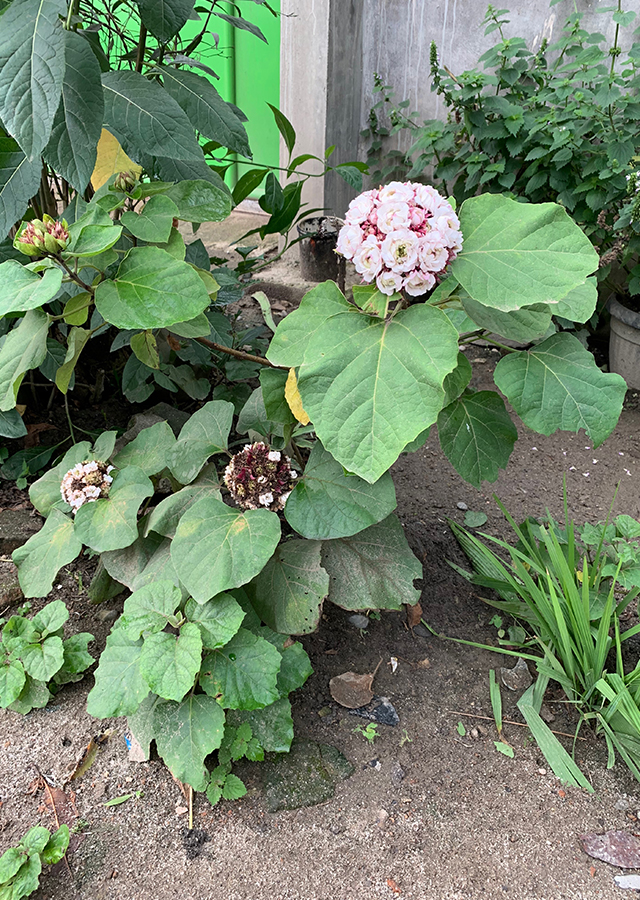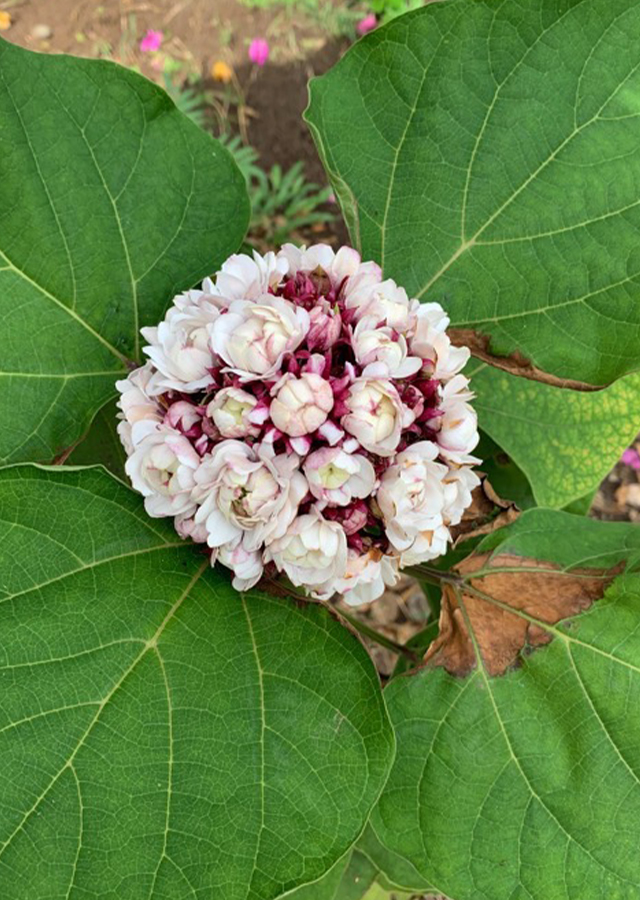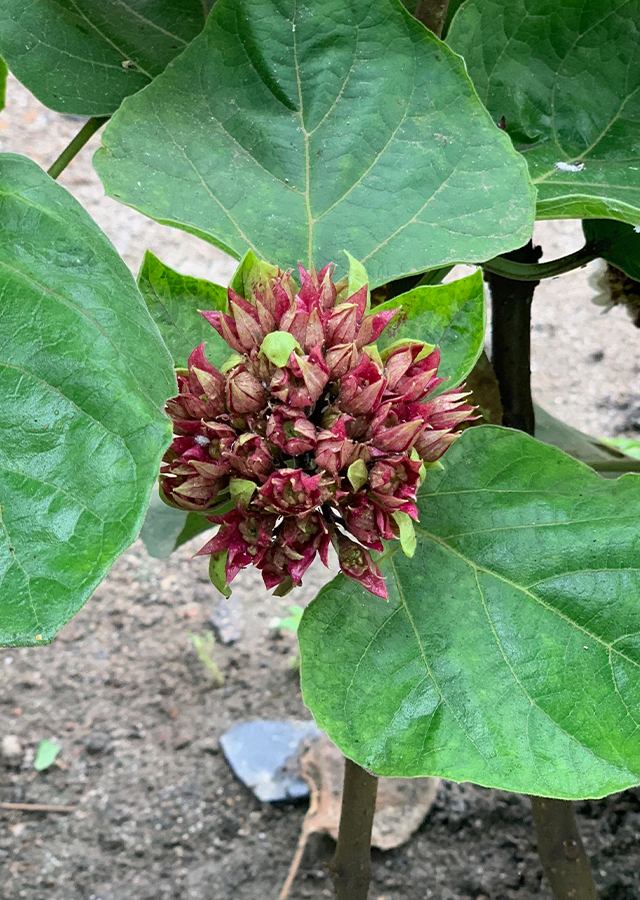Fragrant Clerodendrum
Clerodendrum chinense (Osbeck) Mabb.
Lamiaceae
Location in our garden
Principal



Synonym
Agricolaea fragrans (Vent.) Schrank
Clerodendrum chinense var. hamrense Das, Sarma & Borthakur
Clerodendrum chinense var. parviflorum M.R.Almeida
Habitus
Shrubs. A perennial shrub 0.5-3 m tall.
Part Used
Leaves
Roots
Stem
Growing Requirements
Full Sunshine
Habitat
Wetland
Riverbanks
Forest
Grassland
Overview
This species is native to China, Southeast Asia, and a small part of South America (Bolivia). Nowadays, it become a highly invasive weed in tropical and subtropical ecosystems. The plant is harvested from the wild for local use as medicine and ornamental plants. It is categorized as a “major weed” in Hawaii, Fiji, Western Samoa, and America Samoa.
Vernacular Names
Chong ban xiu mo li (Chinese), Avispero (Cuba), Jazmín hediondo (Puerto Rican), Flor de muerto (Spanish), Naang yaem (Thailand), Pelegrina (Philippines), Glory bower (English), Vậy trắng (Vietnam).
Agroecology
In tropical and sub-tropical climes, C. chinense grows in moist habitats (annual rainfall greater than 1000 mm). This plant thrives in regions with plenty of sunlight and healthy soil (pH 5-7). C. chinense, on the other hand, is a shade-tolerant species that can thrive in the understory.
Morphology
- Roots - consist of many root suckers.
- Stem- branches stout, finely pubescent, branchlets nearly 4-angled to round, velvet-hairy when young, becoming hairless.
- Leaves - membranous, broadly ovate to triangular-ovate, 6-25 cm long, 5-25 cm wide, both surfaces sparsely to moderately strigillose.
- Flowers - fragrant, in stalks 1 to 2 cm long. The calyx tube is rather slender below and enlarged above, with five to six lanceolate lobes which are reddish-purple, and about 1.5 cm long.
Cultivation
- By seed - best sown as soon as it is ripe. Germination can be erratic but usually takes place within 20-60 days at 20 °C.
- By root cuttings, 6-8 cm long, usually grow away well.
Chemical Constituents
Beta-sitosterol, clerosterol, daucosterol, caffeic acid, kaempferol, 5,4'-dihydroxy-kaempferol-7-O-beta-rutinoside, acteoside, and leucoseceptoside A.
Traditional Medicinal Uses
- Leaves - methanol extract of leaves showed significant analgesic, anti-inflammatory, and antipyretic effects showed activity against Trypanosoma cruzi, treatment of rheumatism, asthma, ague, and inflammatory diseases, leaf decoction is used for scabies.
- Stems and flowers - Chloroformic extract (CE) of stems, flowers, and leaves showed activity against Trypanosoma cruzi.
- The root is considered antibacterial, antiphlogistic, and diuretic. It is used in the treatment of abdominal pain, intestinal diseases, kidney dysfunctions, together with leaves, used as a treatment to cure rheumatism, asthma, and inflammatory disease,
Part Used
Reference Sources
- Gao LM, Wei XM, He YQ. [Studies on chemical constituents in leafs of Clerodendron fragrans]. Zhongguo Zhong Yao Za Zhi. 2003 Oct;28(10):948-51. Chinese. PMID: 15620185.
- Invasive Species Compendium. 2012. Clerodendrum chinense. https://www.cabi.org/isc/datasheet/113371
- Plant of The World Online. 2021. Clerodendrum chinense. https://powo.science.kew.org/taxon/urn:lsid:ipni.org:names:946989-1
- van Valkenburg, J.L.C.H. & Bunyapraphatsara, N., 2001. Clerodendrum philippinum Schauer. In: van Valkenburg, J.L.C.H. and Bunyapraphatsara, N. (Editors): Plant Resources of South-East Asia No 12(2): Medicinal and poisonous plants 2. PROSEA Foundation, Bogor, Indonesia.


